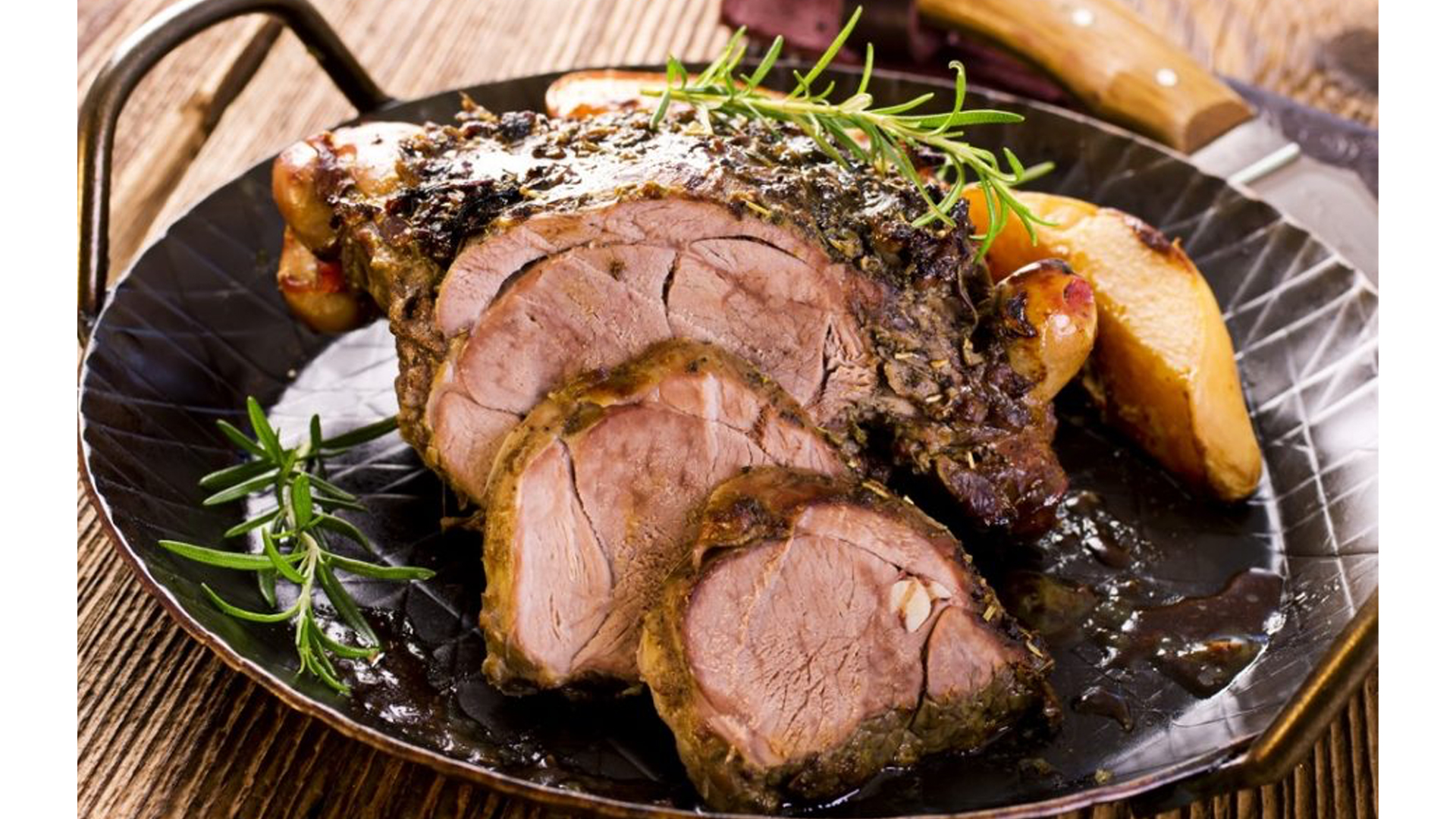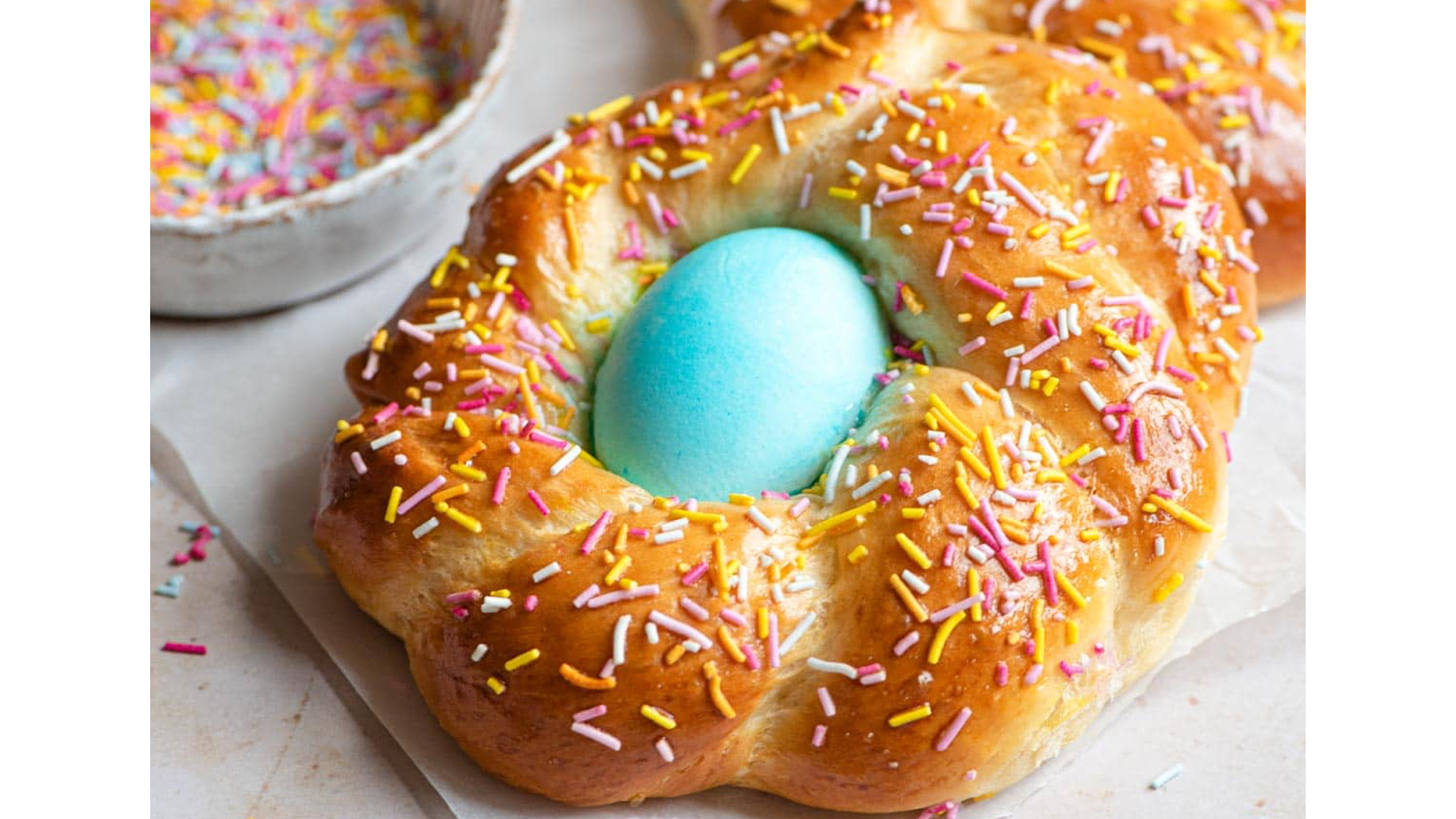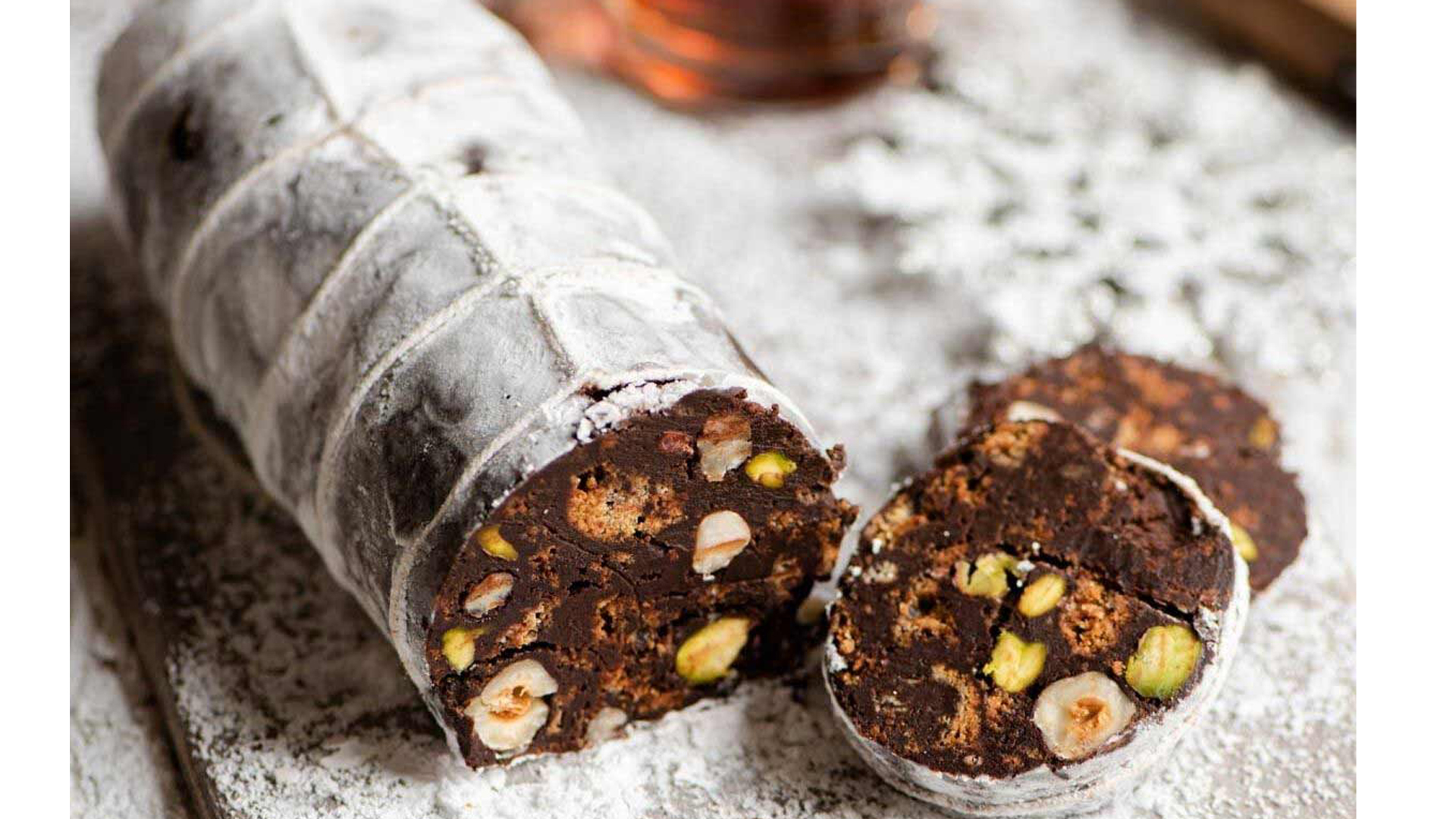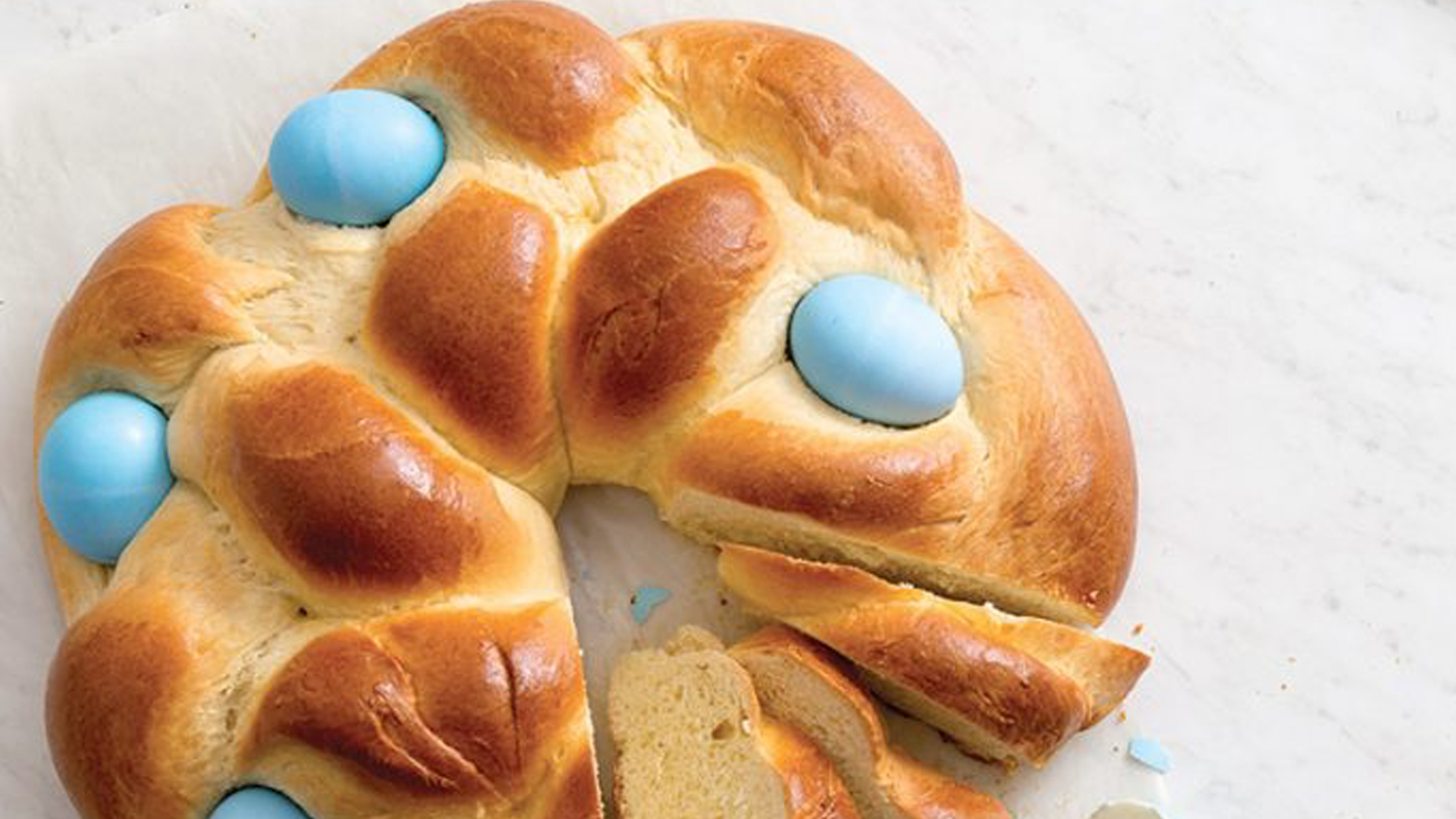You won't find any chocolate bunnies in Italy for Easter because there is no Italian Easter bunny. However, like most major holidays, there are plenty of traditional foods to be eaten.
Less Family, More Fun

(Photo Credit: flavoursholidays.co.uk)
"Natale con i tuoi, Pasqua con chi vuoi,” is a common saying in Italy these days. It translates roughly to Christmas is for your family, but Easter is for your friends. Increasingly, Italians are taking advantage of the long holiday to travel, since the Monday after Easter, Pasquetta, is also a holiday. There are festivals and concerts hosted on Monday as well.
While many traditions vary by region in Italy, most Italians will serve a lamb for Easter Sunday. Similarly, Jewish Italians also often serve lamb during Passover, and both traditions are linked for the same reasons: Eating lamb has historically been a symbol of innocence, sacrifice. Eating lamb in the spring is also linked to pagan traditions, but the Catholic Church would like to ignore that piece of history.
The cut and preparation varies by household and region, but it’s the lamb that has significance. Regional recipes offer variations on how to prepare the lamb as well. In Naples, lamb is braised with peas and boiled eggs. In Venice, the lamb is often served with polenta. In Rome, the meat is roasted with potatoes and rosemary. Elsewhere, lamb cacciatore, a hunter's style stew, is served.
Hard boiled eggs are also prominent in Italy during Easter. In Rome, they are served with salami as part of the Easter breakfast. But they also make their way into breads and cookies. The egg symbolically represents rebirth.
Easter is for Baking

(Photo Credit: Inside the Rustic Kitchen)
Easter is also a great opportunity to bake cakes and sweet breads. All across Italy, sweet, enriched breads, cakes and pies are a mainstay of the holiday feasting.
One of the most basic breads is a pane di Pasqua, literally the bread of Easter. This enriched brioche bread is centuries old and usually braided with colored eggs wrapped in the dough. The bread is flavored with anise or citrus.
Another widely eaten bread is Colomba di Pasqua, literally Easter Dove. These breads are dove-shaped and made from enriched dough. They have long been part of the Easter tradition, with early versions eaten in Milan in the 12th century, and other variations going back to the Holy Roman Empire. The style of Colomba di Pasqua eaten at Easter today is similar to panettone and dates to the mid-20th Century.
It's not just a coincidence a bread similar to panettone was made popular at Easter. Modern panettone with the high domed shape and airy interior was really an invention that came about thanks to innovations in industrial baking. Angelo Motta built a factory to produce his luxurious bread in the 1920s, but the expensive equipment was idled outside of Christmas. By the early 1930s, he crafted a dove-shaped bread with a similar consistency to put his machinery to work. Unlike panettone, there aren’t any raisins in the Colomba di Pasqua, only candied citrus, and the cake is typically topped with almonds. Today there are many other flavors like pistachio and lemon.
Originally from Perugia, Ciaramicola cakes are flavored with lemon and topped with meringue.
The cakes are usually a bright pink or red color, representing the colors of the city of Perugia. The coloring comes from Alchemes, a spiced liquor colored with Kermes insects.
Other less popular cakes include the Medieval-era cake Pasimata, flavored with citrus zest. It tends to be dense, but otherwise similar to panettone. In Lazio, a ring-shaped bread is baked with ham and cheese, with whole eggs baked into the dough as well, similar to the Neapolitan Casatiello.
Easter is for Candy

(Photo Credit: Inside the Rustic Kitchen)
Italians may not have chocolate easter bunnies, but they do have chocolate salami. This confection isn't made from any actual meat. Instead, its chocolate and butter mixed with nuts and cookie crumbles formed into a log to look like a salami.
And when it comes to snacking on cute creatures made of sugar, Italians eat lamb-shaped candies. Since the end of the 19th century, Lambs made of marzipan have become an important symbol of the holiday. The sugary almond paste was first molded into the shape of a lamb by nuns in Favara at the request of a noble family. They continued making the lambs each year, and eventually a Cardinal brought one of the marzipan lambs back to Rome in the 1920s. After the war, the tradition became a lot more popular, likely helped by the 1949-1950 Jubilee in Rome. Now marzipan lambs are as common in Italy as chocolate bunnies are in the United States.
Italian chocolatier Ferrero, makers of the famed Ferrero Rocher chocolate and hazelnut candy can't pass up a marketing opportunity. The luxurious chocolate balls can be found with numerous Easter-themed packaging. And of course, for American consumers, boxes of Ferrero Rocher in the shape of a bunny rabbit. Ferrero also makes two types of Easter eggs. Smaller eggs with a chocolate shell are filled with hazelnut cream, and larger ones filled with Ferrero Rocher.
Perugina, the makers of the iconic Baci chocolate, now have a special Easter offering: the Baci egg. The egg-shaped chocolate shell is hollow and filled with three more Baci candies.
Ian MacAllen
Ian MacAllen is America Domani's Senior Correspondent and the author of Red Sauce: How Italian Food Became American. He is a writer, editor, and graphic designer living in Brooklyn. Connect with him at IanMacAllen.com or on Twitter @IanMacAllen.

